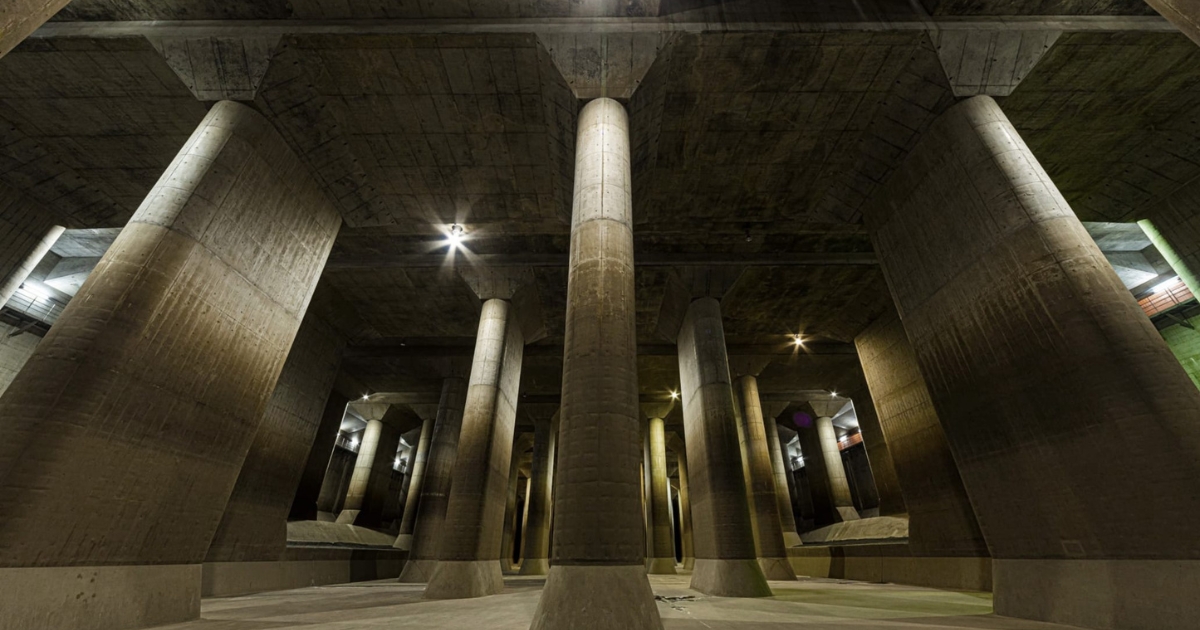Major cities around the world are secured by astonishing engineering projects designed to outmatch the most severe flood threats. These are not simple walls, but complex, meticulously designed systems with specific technical specifications.
Here is a closer look at the exact details that make these five global flood control projects so successful:
1. Metropolitan Area Outer Underground Discharge Channel (Japan)
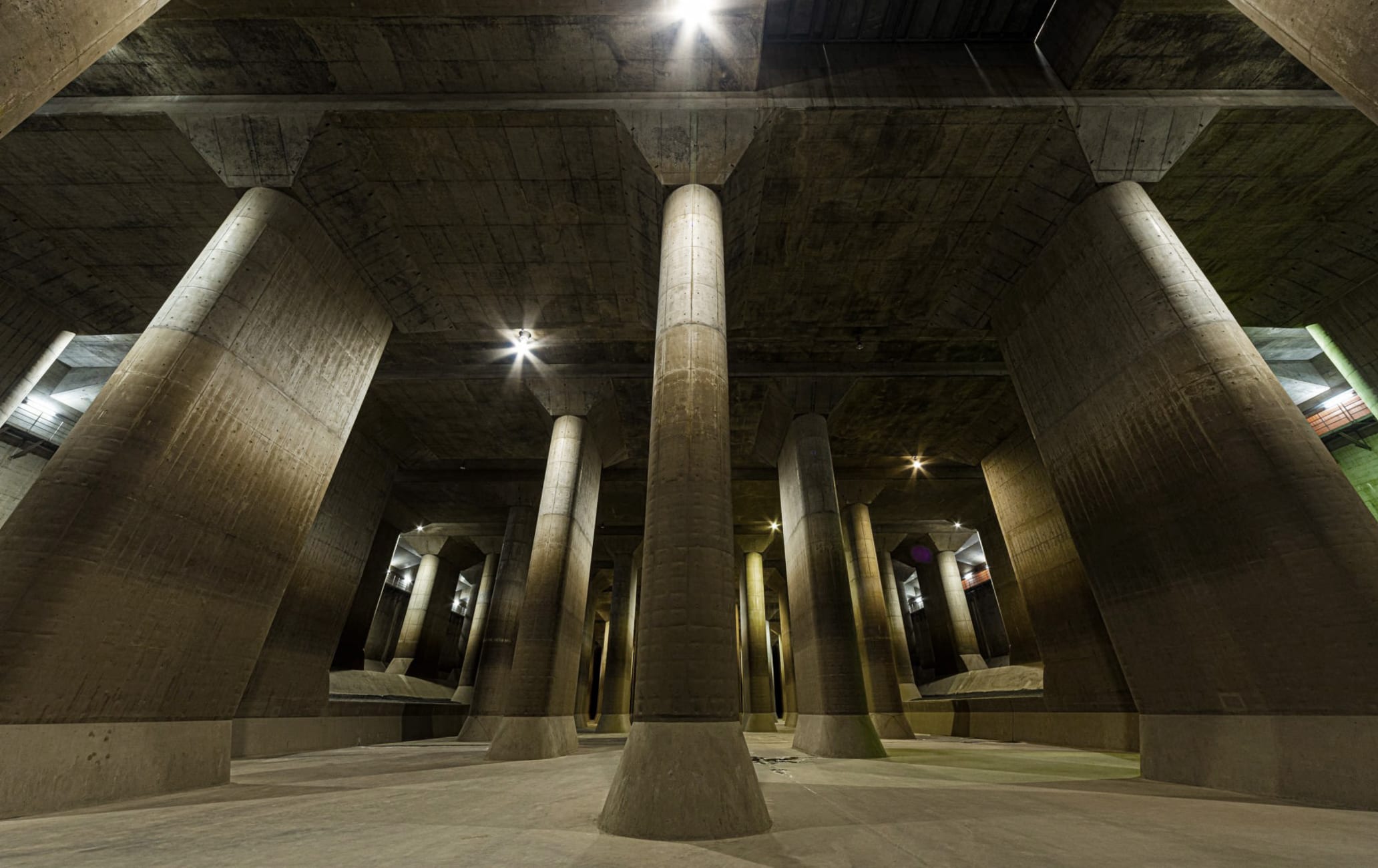
Known as G-Cans, this Japanese facility is the world’s largest underground flood diversion structure.
- Core Structure: The system consists of five enormous concrete containment silos, each rising to a height of 65 meters (213 feet) with a 32-meter (105-foot) diameter.
- Connecting Network: These silos are linked by a 6.4-kilometer (4.0-mile) tunnel system built 50 meters (160 feet) beneath the surface.
- The “Underground Shrine”: The water flows into the famous Pressure Adjusting Water Tank—a vast chamber 177 meters (581 feet) long, 78 meters wide, and 18 meters high, supported by 59 concrete pillars.
- Discharge Power: Four colossal pumps, powered by modified aircraft gas turbines, expel the stored water into the Edogawa River.
- Result: This $2.5 billion USD (P146.25 Billion) project, completed in 13 years, has a Very High effectiveness, mitigating flood damage in the low-lying Tokyo metro area.
2. Delta Works (Netherlands)
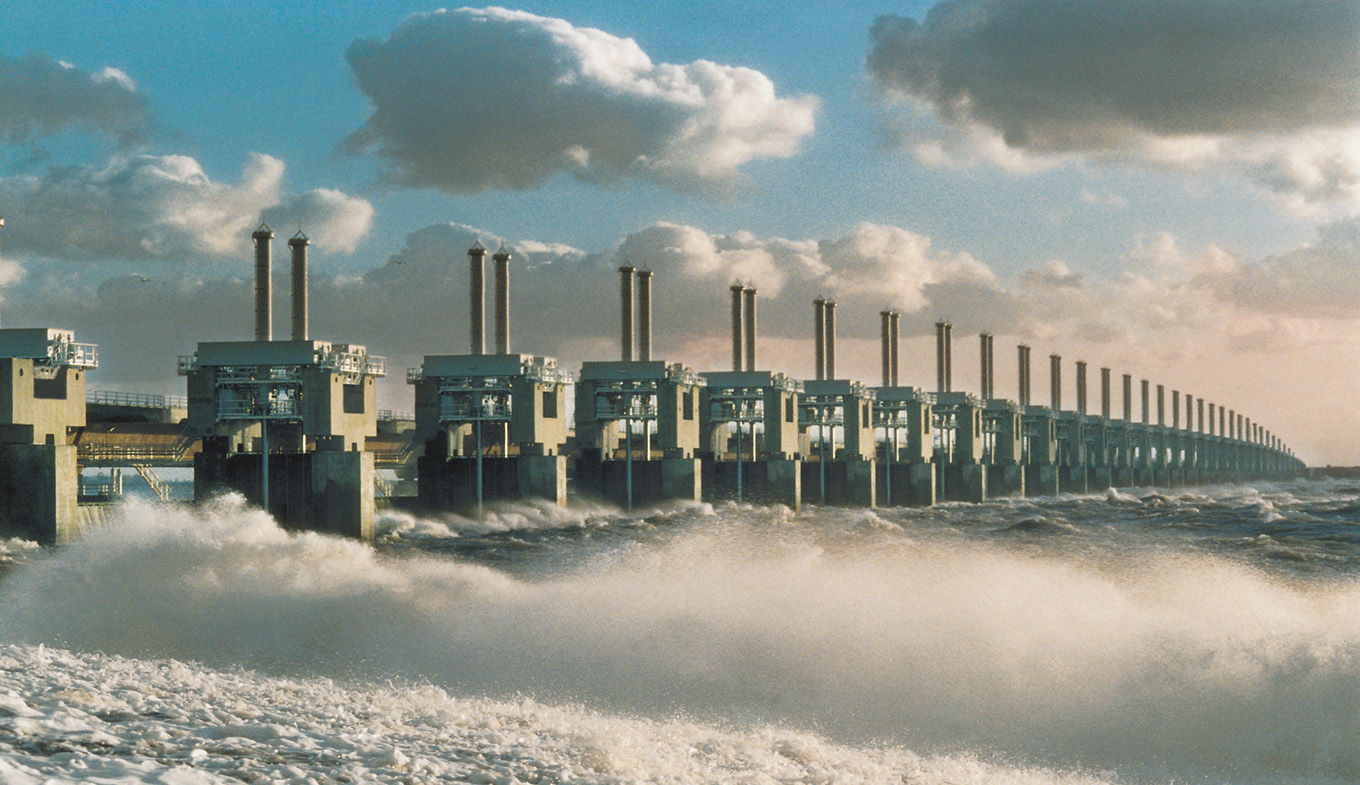
The Delta Works is a comprehensive system of 13 major dams, sluices, and storm surge barriers that collectively shortened the country’s vulnerable coastline by 700 km.
- Scope and Structure: The works are a mixture of permanent dams and movable barriers built between 1953 and 1997, costing up to P550 Billion.
- The Oosterscheldekering: The crowning jewel is the Oosterscheldekering (Eastern Scheldt Storm Surge Barrier), a key movable structure about 2.8 km (1.75 miles) long. It is designed with large, adjustable gates that are only closed when the sea level is expected to rise 3 meters above mean sea level, allowing normal tidal flow otherwise.
- Maeslantkering: Another crucial component is the Maeslantkering, a massive pair of curved, movable barriers guarding the port of Rotterdam.
- Protection Standard: The entire system is designed to provide Extremely High protection, meeting the “Delta norm” to withstand a catastrophic flood event with a probability of only 1 in 10,000 years for major urban areas.
3. HSDRRS (New Orleans, USA)
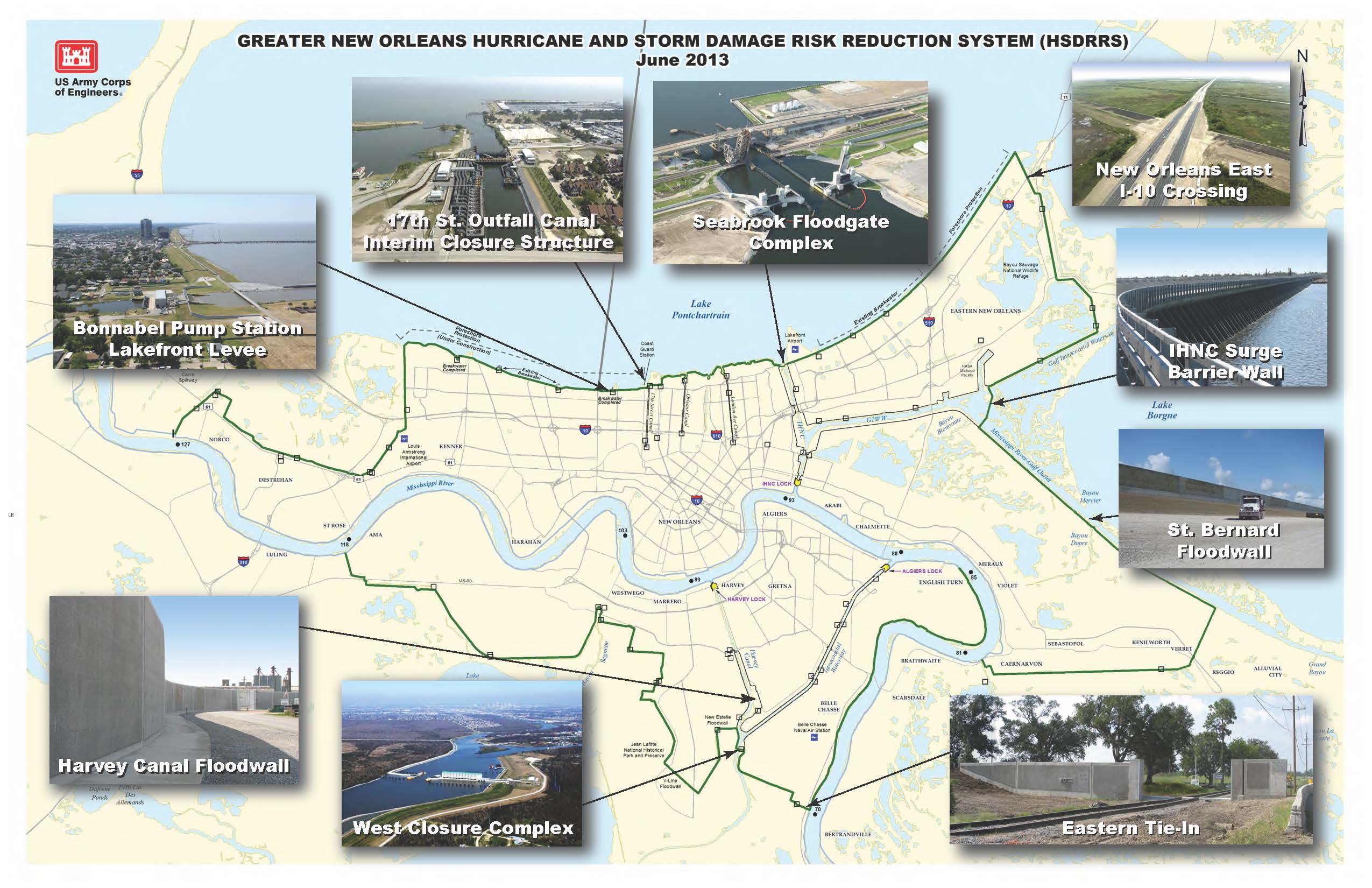
The Hurricane & Storm Damage Risk Reduction System (HSDRRS) is the modernized flood defense for Greater New Orleans, built after Hurricane Katrina.
- Scale of Defense: The overall system, costing up to P1.05 Trillion, consists of 350 miles of levees and floodwalls and includes 73 non-Federal pumping stations, 3 canal closure structures, and 4 gated outlets.
- Key Barrier: The system includes the Inner Harbor Navigation Canal (IHNC) Lake Borgne Surge Barrier—a 1.8-mile concrete wall with a 150-foot sector gate and barge gate.
- Design Level: The system is engineered for a 100-year level of risk reduction, meaning it is built to handle a storm surge event that has a 1% chance of occurring or being exceeded in any given year. This design explicitly accounted for factors like sea level rise and soil subsidence over its 50-year design life.
- Result: Its completion in 2018 secured a High level of protection, successfully withstanding subsequent major storms.
4. Thames Barrier (London, UK)

The Thames Barrier is a famous movable defense designed to protect 125 square kilometers of central London.
- Structure and Size: The barrier spans 520 meters across the River Thames. It comprises 10 movable steel gatessupported by nine concrete piers.
- Gate Specifications: The four main gates are massive, weighing approximately 3,700 tonnes each. When fully raised to block the water, they stand as high as a five-story building.
- Operation: The individual gates can be closed within about 10 minutes, with the entire barrier taking approximately 90 minutes to close fully. Each gate is designed to withstand a total water load of roughly 9,000 tonnes.
- Result: Operational since 1984 (a completion time of 8-10 years), the barrier’s High effectiveness is proven by hundreds of successful closures, protecting key infrastructure and up to 1.25 million people.
5. MOSE Project (Venice, Italy)
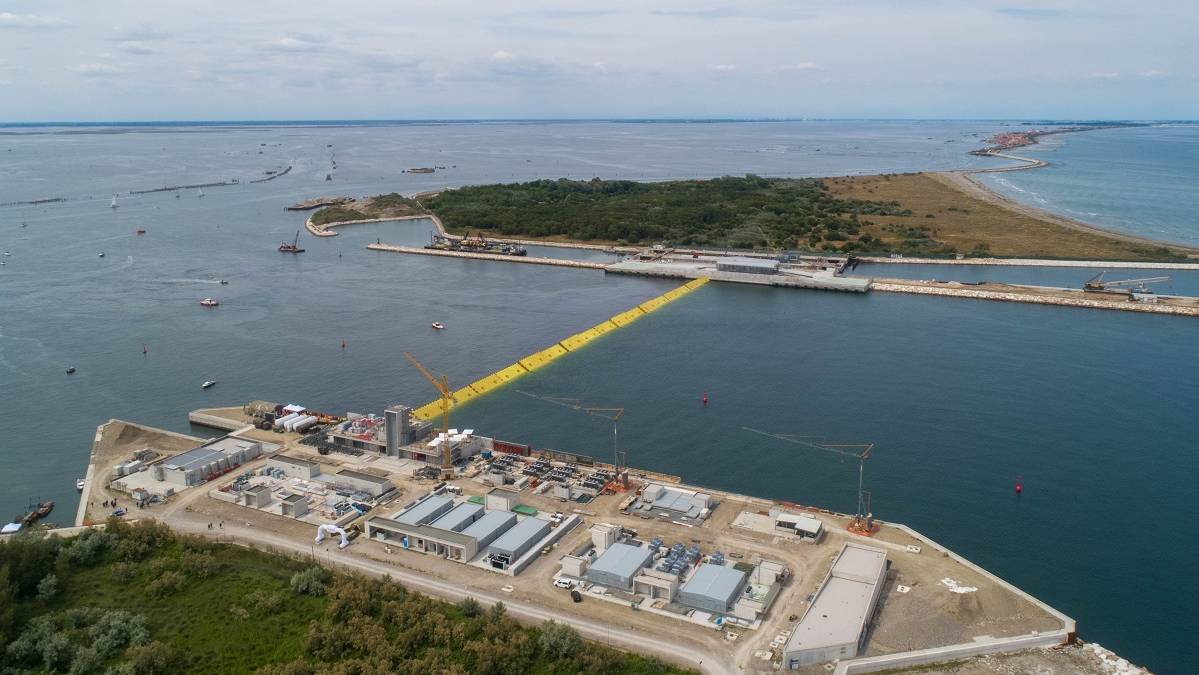
The MOSE (Modulo Sperimentale Elettromeccanico) Project is Venice’s dynamic solution to the recurring acqua altafloods.
- Total Gates: The system is an integrated network of 78 mobile gates divided into four barriers installed on the seafloor at the three inlets of the Venetian Lagoon (Lido, Malamocco, and Chioggia).
- Gate Dimensions: The gates are metal box-type structures that are 20 meters wide, with lengths varying from 18.5 to 29.5 meters, and are 3.6 to 5 meters thick.
- Mechanism: Under normal conditions, the hollow gates are filled with water and rest on their housing structures on the seabed. When a tide exceeding 110 cm is forecast, compressed air is pumped into the gates, forcing the water out and causing the barriers to float and rise to the surface, blocking the sea.
- Capacity: MOSE is designed to protect the lagoon from tides up to 3 meters high.
- Result: The 20-year project (completed in 2023) shows Promising effectiveness, having repeatedly saved the city from severe high-water events since its 2020 operational start.
A Critical Look: The Philippine Flood Control Challenge
These global projects illustrate the complex, multi-billion-peso commitment required to safeguard communities with detailed and robust engineering against the ever-present dangers of calamities.
While the projects above showcase global best practices in engineering and disaster mitigation, the Philippines faces a challenging reality where the effectiveness of its own flood control initiatives is critically compromised.
Despite the government allocating billions of pesos for flood mitigation programs, persistent and widespread flooding continues to devastate communities across the archipelago, particularly in Metro Manila and Cebu. Experts and ongoing investigations point to a confluence of systemic failures:
- Corruption and Substandard Work: The most profound issue is a culture of corruption. Senate inquiries and internal government investigations have exposed massive anomalies, including “ghost projects” (non-existent infrastructure) and the use of substandard materials and bloated costs to compensate for huge kickbacks to officials. This means the infrastructure meant to protect communities collapses or is ineffective from the start.
- Poor Planning and Misalignment: Many flood control projects are found to be misaligned with actual high-hazard flood zones, meaning funds are spent on areas that are not the most critical, while flood-prone areas remain unprotected. Furthermore, a lack of comprehensive drainage master plans leads to fragmented, short-term solutions.
- Urbanization and Waste Management: Decades of unchecked urbanization, excessive paving that prevents water absorption, and catastrophic solid waste mismanagement (plastic clogging drains and waterways) have severely aggravated natural flooding, turning rain into a recurring national disaster.
The lack of accountability and the failure of infrastructure to protect Filipinos—especially during major typhoons—transforms climate adaptation into a crisis of governance, demanding urgent systemic reform beyond traditional concrete structures.


